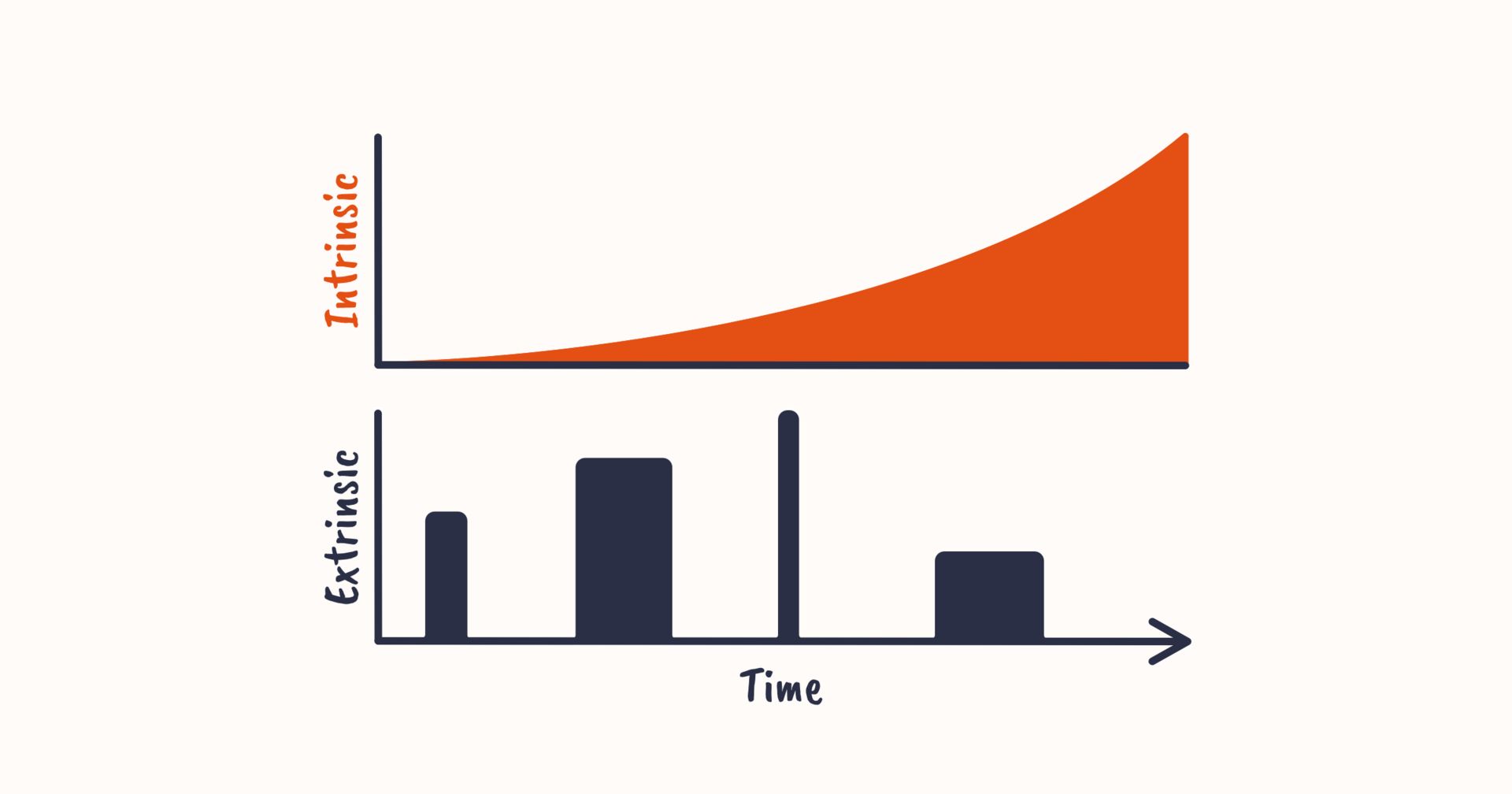- Evidence Snacks
- Posts
- Intrinsic Vs Extrinsic
Intrinsic Vs Extrinsic
Balancing motivation in school
Hey 👋
Hope your week isn’t too busy. Today, a snack on how to balance sources of motivation in school…
Big idea 🍉

There are two main sources of motivation: intrinsic and extrinsic. The better we understand how they work and how they interact, the more we can harness them in service of learning.
Intrinsic motivation arises when we value the activity itself. We play the guitar for hours simply because we love the music and the feeling of mastery.
Extrinsic motivation arises from external factors. We practice the guitar not for the joy of it, but because a parent offers pocket money for every completed hour.
Three dynamics shape their interaction:
Effects over time: Intrinsic motivation acts like a ball on a shallow slope: it needs a push to get going, but once moving, it gathers its own momentum. Extrinsic motivation is the opposite: fast-acting but short-lived. Remove the reward, and the drive disappears
Extrinsic erodes intrinsic: Offering rewards for tasks students already value can actually lower their intrinsic drive. Their brain unconsciously re-calculates the value of the task, deciding that if a bribe is required, the activity must not be as inherently valuable.
Reward Bias: We tend to overvalue extrinsic rewards, mostly because they are visible and fast-acting. We see the student work harder for the sticker now, confirming our bias, while missing the slow-burn build of their intrinsic drive via repeated success.
Where does this leave schools? To build lasting engagement, we should:
Use rewards as the ‘starter motor’, not the engine. Once competence begins to build, fade rewards out to let intrinsic drive take over.
Protect existing passion. Avoid heavily rewarding students who are already motivated. If they love reading, a ’tokens-for-books’ scheme might backfire.
Prioritise the success loop. The more knowledge and fluency students develop in a domain, the more interest and curiosity they will exhibit.
Getting motivation right is complex, but the payoff is worth it. It’s the catalyst that turns your great instruction into learning.
🎓 For more, check out this paper on the interaction between extrinsic and intrinsic motivation.
Summary
Intrinsic and extrinsic motivation interact in complex ways.
Extrinsic rewards act as a starter motor, but they can accidentally erode existing drive.
To build lasting engagement, use rewards to get going, protect passion, and prioritise the success loop.
Little updates 🥕
Study on the timing of rewards → suggests early rewards boost memory for boring content, while later rewards boost memory for interesting ones.
Paper on personalised attendance messages → finds small absence reductions, suggesting this is a simple, low-cost way to boost attendance.
Study on whether growth mindset shapes or reduces SES gaps in PISA scores → finds it explains only ~3%, suggesting minimal effect on inequality.
Paper on AI tutoring in UK math(s) classes → finds supervised AI matches human tutors and improves transfer, suggesting scalable personalised support.
Upgrade your evidence edge → Get Snacks PRO
Have a wild weekend.
Peps 👊
PS. The AI + Education world is moving FAST. Keep yourself up to speed with Neil’s super concise weekly email shot:
|
